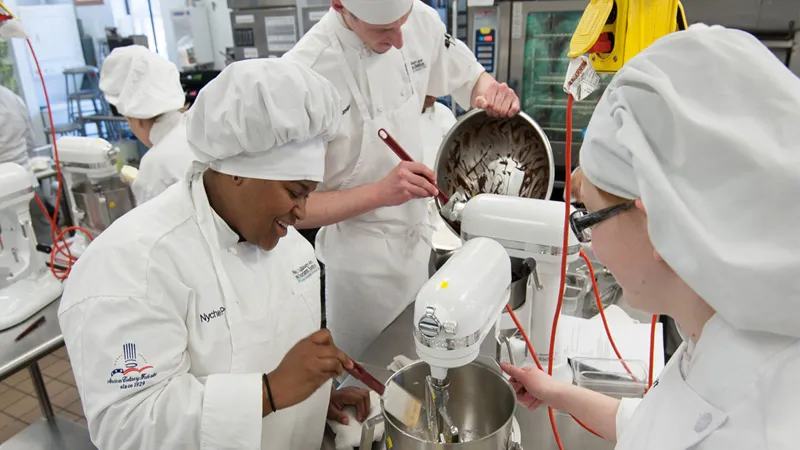In recent years, culinary arts tourism has emerged as a vibrant and dynamic sector within the global travel industry, reflecting a growing appetite for immersive food experiences. With projections suggesting an explosive growth from USD 16.23 billion in 2025 to a staggering USD 54.23 billion by 2032, travelers are increasingly seeking authentic culinary adventures that go beyond mere dining. This trend is fueled by an insatiable curiosity about diverse cuisines and a desire to connect with local cultures through their culinary heritage. As we delve into this fascinating world of food tourism, we will explore the key drivers behind its growth, the role of technology in shaping culinary experiences, and the impact on local economies and communities.
| Category | Details |
|---|---|
| Market Growth | Projected to grow from USD 16.23 billion in 2025 to USD 54.23 billion by 2032. |
| Key Factors for Growth | 1. Rising passion for new cuisines. 2. Influence of social media. 3. Customized experiences. 4. Demand for authenticity. |
| Technology’s Role | 1. Virtual restaurant tours. 2. Interactive cooking classes. 3. Social media for food marketing. |
| Travel Preferences | Travelers seek cultural immersion and personal enrichment through food experiences. |
| Tourism Trends | 1. Cultural immersion through culinary tours. 2. Sustainable practices in food production. 3. Boosting local economies. |
| Prominent Destinations | – North America: New York, Mexico City, San Francisco. – Europe: Italy, France, Spain. – Asia-Pacific: Japan, China, India. – Latin America: Brazil, Argentina. – Middle East: Saudi Arabia, UAE. |
| Economic Impact | 1. Boost to local businesses. 2. Increased hotel demand. 3. Job creation in tourism sectors. |
| Future Outlook | Culinary tourism is becoming essential in global tourism, offering more opportunities for travelers to explore diverse cuisines. |
The Rise of Culinary Tourism
Culinary tourism is becoming a big deal around the world! Many travelers are now eager to explore different cuisines and try new foods when they visit different countries. This exciting trend helps people not only taste local dishes but also learn about the culture and history behind them. As food becomes a major part of travel plans, more destinations are creating special food tours and events to attract visitors who love to eat and discover new flavors.
This growing appetite for culinary adventures means that countries are putting more effort into showcasing their unique foods. Local chefs are offering cooking classes, and festivals are popping up to celebrate regional dishes. This trend allows tourists to have fun while they taste different foods, and it also helps support local economies. By enjoying local cuisines, travelers learn about and appreciate the traditions and stories behind the meals they enjoy.
Technology Transforming Culinary Experiences
Technology is changing the way we experience food during our travels! With the help of the internet, travelers can now take virtual tours of restaurants and watch cooking classes from famous chefs right from their homes. This means that even before they visit a place, they can get excited about what they might eat! Social media platforms like Instagram are also playing a huge role by showing off beautiful food photos that inspire people to travel to new culinary hotspots.
Moreover, travel companies are using technology to create personalized experiences for food lovers. This can include arranging special dining experiences or cooking lessons that highlight local flavors. As technology continues to grow, it opens up more possibilities for travelers to connect with local chefs and discover hidden gems in the culinary world. This digital revolution is making culinary tourism more accessible and fun for everyone!
Culinary Tourism and Sustainability
Today’s travelers care about more than just having a good time; they want to make a difference too! Culinary tourism allows them to connect with local communities and support sustainable eating practices. This means tourists are looking for experiences that promote eco-friendly methods, such as farm-to-table dining and organic food tours. By participating in these activities, travelers help protect the environment while enjoying delicious meals.
Additionally, many destinations are focusing on sustainability to attract eco-conscious tourists. They are showcasing their commitment to responsible tourism by offering experiences that reduce waste and support local farmers. This movement benefits both the environment and the local economy, creating a win-win situation for everyone involved. As more people choose sustainable culinary experiences, they contribute to a healthier planet and vibrant local communities.
Exploring Global Culinary Hotspots
Around the world, there are amazing places known for their delicious food! In North America, cities like New York and San Francisco attract food lovers with their diverse culinary scenes. In Europe, countries like Italy and France are famous for their mouth-watering dishes and rich food traditions. Travelers can experience unique flavors and cooking styles that reflect the culture of each place.
Asia-Pacific is also becoming a culinary hotspot, with countries like Japan and India offering exciting food experiences. From sushi to curry, there are so many tastes to explore! Even in Latin America and the Middle East, countries like Brazil and Saudi Arabia are showcasing their local delicacies. As food tourism grows, it creates opportunities for travelers to enjoy a wide range of global cuisines and learn about the cultures behind them.
The Economic Impact of Culinary Tourism
Culinary tourism is not just fun; it also helps local economies thrive! As more travelers visit food destinations, restaurants, markets, and hotels see an increase in business. This boost in tourism creates job opportunities in many areas, from hospitality to food production. Local communities benefit greatly as culinary tourism encourages visitors to spend money on food experiences, which supports local farmers and vendors.
With the culinary arts tourism market projected to grow significantly, destinations are recognizing the value of food experiences. By investing in food festivals and culinary events, places can attract even more visitors. This growing interest in culinary tourism leads to a cycle of economic growth, where local communities can prosper while sharing their delicious traditions with the world.
The Future of Culinary Arts Tourism
The future of culinary arts tourism looks bright! With travelers seeking more immersive and meaningful experiences, destinations are stepping up their game by offering personalized tours, cooking classes, and food festivals. As the market continues to grow, food lovers will have even more opportunities to explore diverse cuisines and cultures around the world. This trend is not only exciting for tourists but also beneficial for local communities.
As technology enhances culinary travel experiences and sustainable practices become more popular, the culinary tourism industry is set to expand even further. Travelers will continue to seek out unique food experiences that connect them with local cultures and traditions. The global culinary arts tourism market is poised to become a vital part of the tourism industry, inviting everyone to savor the rich flavors of the world.
Frequently Asked Questions
What is culinary arts tourism?
Culinary arts tourism is a type of travel focused on experiencing local food, culture, and cooking traditions, allowing travelers to enjoy authentic dining and learn about different cuisines.
Why is culinary tourism growing so fast?
Culinary tourism is growing due to travelers’ increasing desire for unique food experiences, the influence of social media, and the availability of customized culinary packages.
How does technology impact culinary tourism?
Technology enhances culinary tourism through virtual tours, online cooking classes, and social media, making it easier for travelers to explore and book food experiences.
What are some popular destinations for culinary tourism?
Top culinary tourism destinations include New York, San Francisco, Italy, France, Japan, and Brazil, known for their unique food experiences and local cuisines.
How does culinary tourism benefit local economies?
Culinary tourism boosts local economies by increasing restaurant traffic, creating jobs, and driving demand for hotels and related services.
What trends are emerging in culinary tourism?
Emerging trends include a focus on cultural immersion, sustainable practices, and personalized culinary experiences that connect travelers with local communities.
What can travelers expect from culinary tourism experiences?
Travelers can expect immersive experiences like food tours, cooking classes, and tastings that allow them to connect with local chefs and learn about regional cuisines.
Summary
Culinary arts tourism is rapidly growing, expected to increase from USD 16.23 billion in 2025 to USD 54.23 billion by 2032. This surge is driven by travelers’ desire for unique food experiences that connect them to local cultures. Destinations are enhancing their culinary offerings, with activities like food tours and cooking classes gaining popularity. Technology plays a crucial role, allowing virtual tours and interactive cooking lessons, while social media fuels interest in food travel. As more people seek meaningful travel experiences, culinary tourism supports local economies and promotes sustainable practices worldwide.



